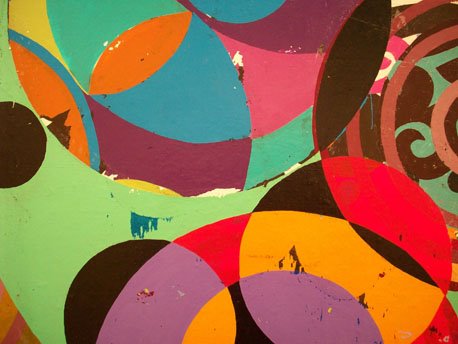30.10.08
BEATRIZ MILHAZES at James Cohan
I've always regarded Bonnard as a hallucinatory painter who routinely transformed mundane reality into ecstatic visions of undulating color and shifting space. One could sense from the heightened key of his paintings that for Bonnard, just moving from room to room could be an almost overwhelming experience. It's just this sort of transformative process that characterizes the paintings of Brazilian artist Beatriz Milhazes, who is presenting a sparse but rewarding show of new work at the James Cohan Gallery in Chelsea. Consisting of only four paintings (one per wall), plus a small group of works on paper in the back room, the exhibition nevertheless reveals Milhazes on a major roll, making the layered complexity and large-scale acrobatics of her painted constructions look effortless. Using interlacing geometric motifs, she builds her paintings by working in reverse on plastic, collaging the chunks of color to the canvas surface like decals in layers, then peeling off the plastic backing. The resulting image has a physicality that is distinctly different from "direct" painting, with lots of frayed edges, openings and incidents that are literally built into the surface -- each little glitch producing additional color resonance. The motif Milhazes employed in earlier works revolved around repetition of a lotus image and recalled '60s psychedelic flower designs, but the new work is dominated by purely geometric shapes combined with patterns drawn from aspects of her local environment in Brazil. The improvisational compositions are wildly complex, but are built on the solidity of a grid structure -- Rio de Janiero Boogie Woogie. The materiality of these paintings, and their layered space read as a non-hierarchical totality -- a simultaneous hallucinatory awareness -- like McLuhan's "continuous field of resonance". These works are gloriously alive with the inclusive richness and the playful humor of a confident painter for whom it seems the world (and the painting) is an ecstatic playground.

